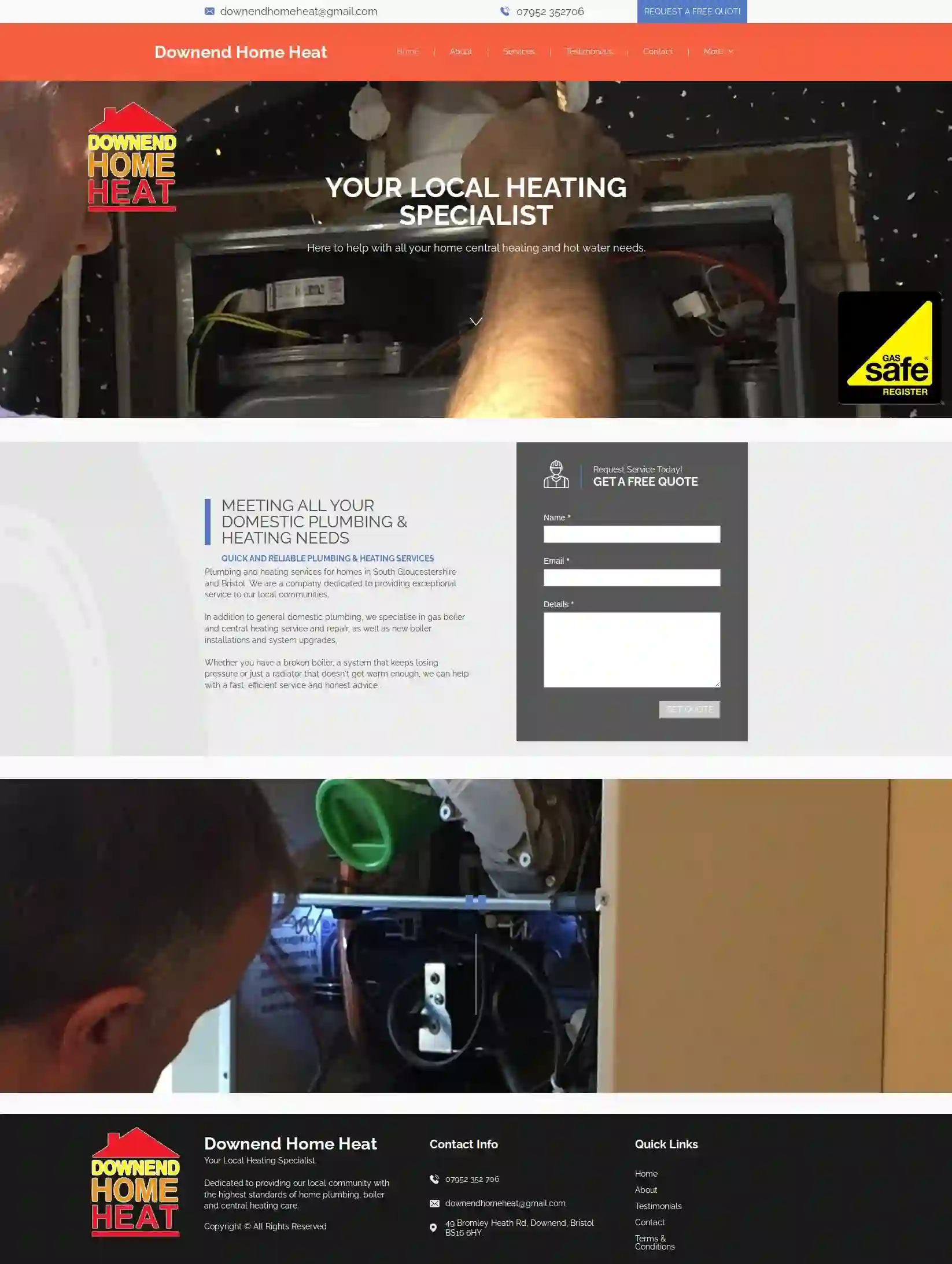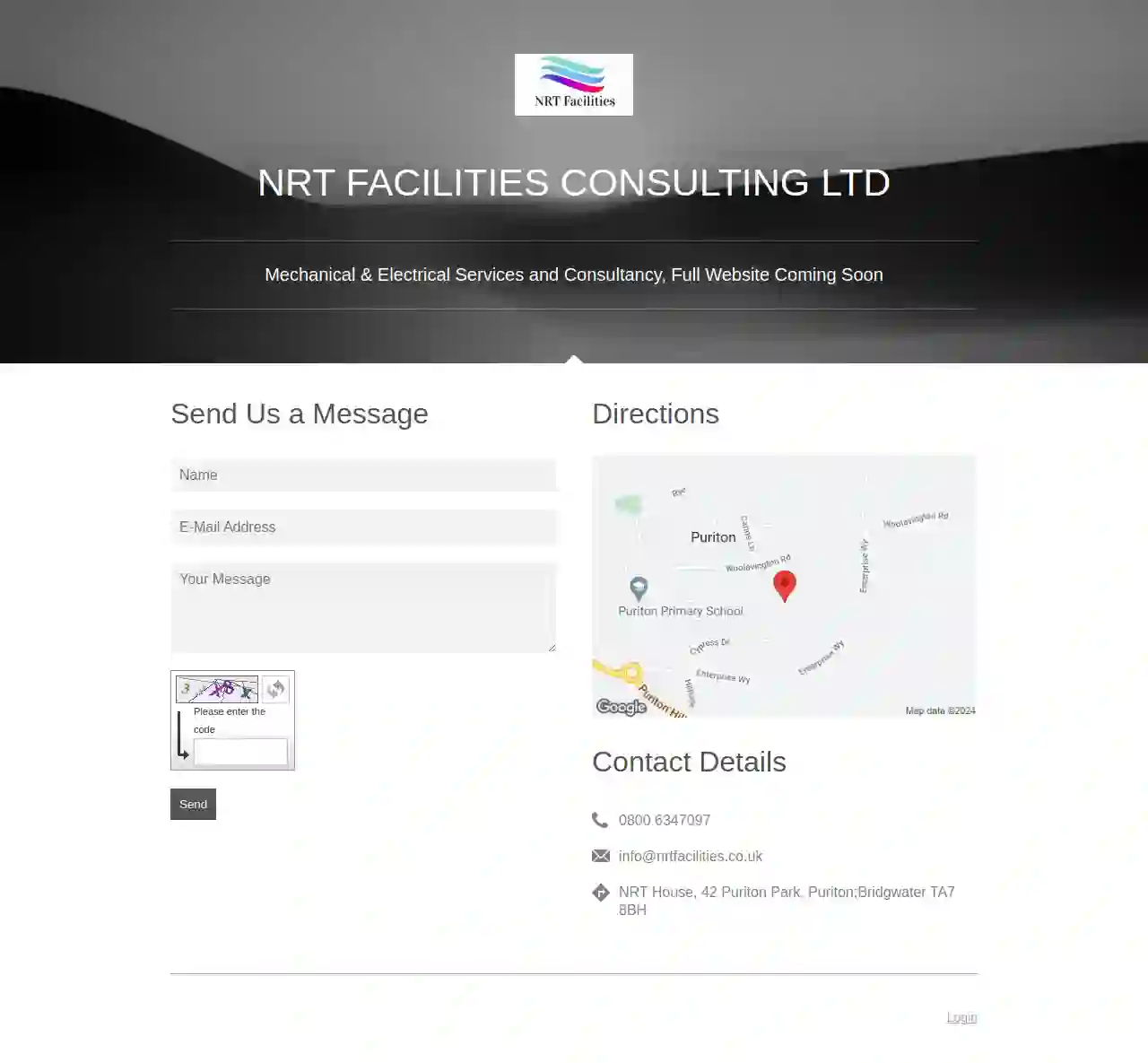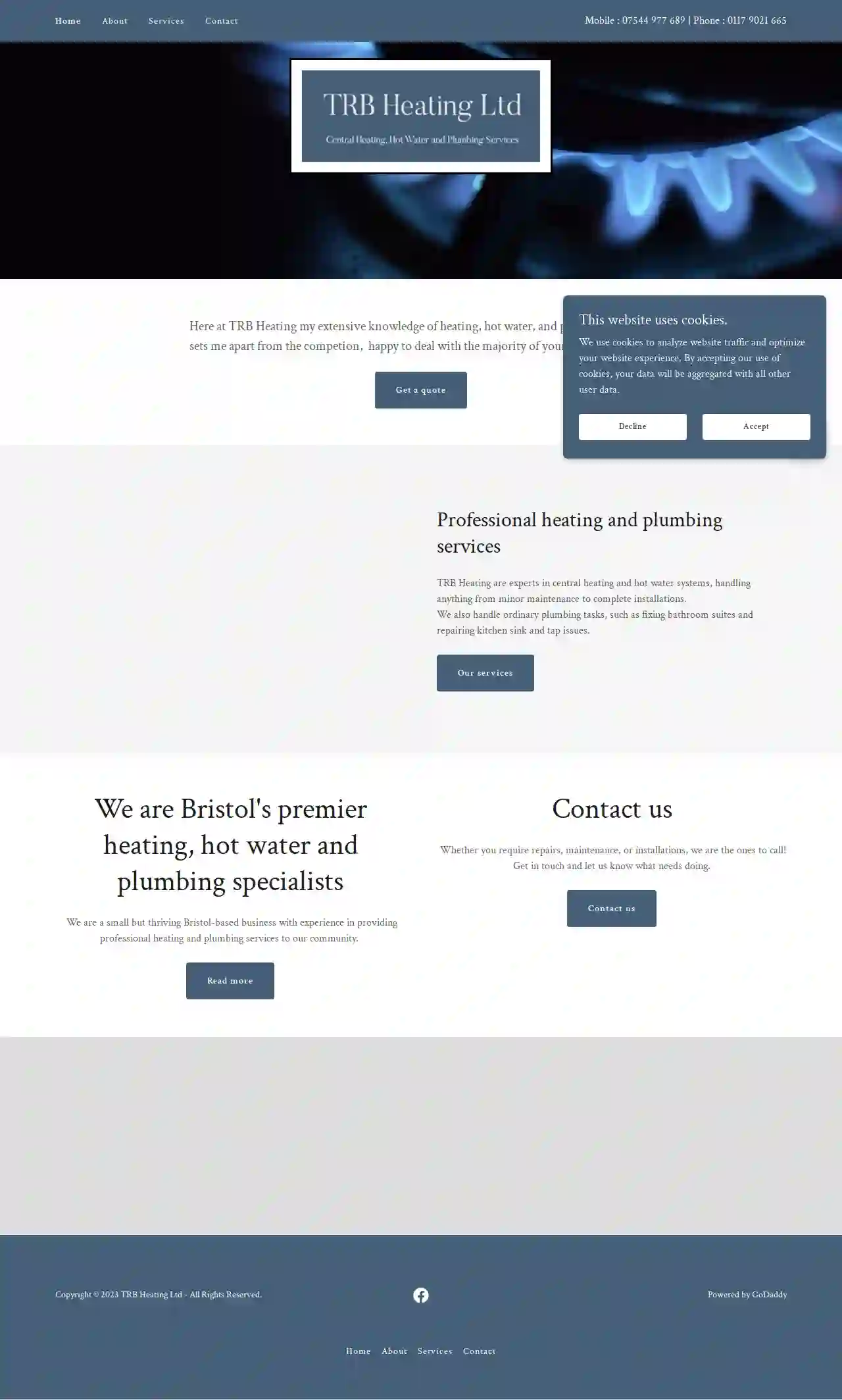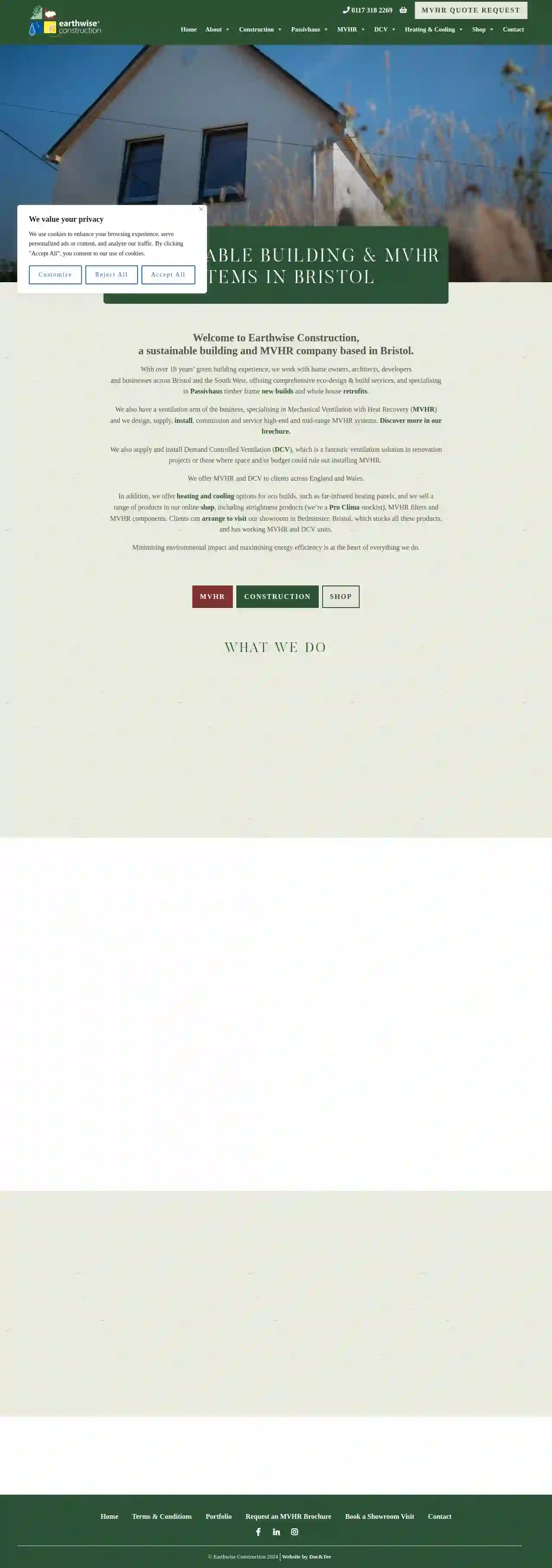Furnace Repair Newport
Top Furnace Service in Newport
Get up to 3 Heating Repair quotes for your project today! Compare profiles, reviews, accreditations, portfolio, etc... and choose the best service.

N&S Air Conditioning
Marine Street, Unit 3 Cwm Small Business Centre, NP23 7TB, GBAt N&S Air Conditioning, we believe in providing top-quality HVAC services to our customers. Our team has over 50 years of combined experience in the industry and is committed to delivering excellent customer service. We offer a wide range of HVAC services including Air Conditioning, Ventilation, Refrigeration, Fire Dampers. Our team is trained to work on all major brands of equipment. We stand behind our work and offer a satisfaction guarantee on all of our services. We also offer an extended warranty ranging from 5-7 years with specific Manufacturers.
- Services
- Why Us?
- Gallery
Get Quote
Pete Jennings Plumbing and Heating
4.417 reviewsWoodville, Horsey Lane, Bridgwater, TA7 8QJ, GBPete Jennings Plumbing & Heating is a leading local heating and plumbing firm based in Bridgwater. We can repair, install and service any kind of boiler, from small domestic appliances to commercial units and under-floor heaters.We can also help you choose the most suitable boiler for your property.
- Services
- Why Us?
- Accreditations
- Gallery
Get Quote
Downend Home Heat
533 reviews49 Bromley Heath Rd, Downend, BS16 6HY, GBDownend Home Heat is a domestic heating company based in Downend, Bristol, aiming to provide our local communities with outstanding customer service and exceptional quality of work. We believe in building our business based on reputation and customer recommendation, so ensuring our customers are happy with the service we provide, is essential. Keeping our business "small and local" allows us to listen to our customers, to understand their needs and concerns and give honest advice, it also lowers our financial overheads, which we pass on to them in lower prices. We are a local, independent business, committed to our customers. With over thirty years experience in fault finding and repair, we believe customers should be supported throughout the life of their heating system and will always offer to repair rather than replace wherever practical. Trust and loyalty is key to our success, we are always happy to provide simple, honest advice so you can make informed decisions. We will never ask for an "on the spot" decision, we talk in plain English without the jargon.
- Services
- Why Us?
- Gallery
Get Quote- Co
Cosy Stoves Solutions
53 reviews123 Main St, City Name, 12345, GBAt [Business Name], we are dedicated to providing exceptional [services] to our clients. With [number] years of experience, our team of experts is committed to delivering high-quality results that exceed our clients' expectations. Our mission is to [mission statement].
- Services
- Why Us?
- Accreditations
- Our Team
- Testimonials
- Gallery
Get Quote 
NRT FACILITIES CONSULTING LTD
NRT House, 42 Puriton Park, Puriton;Bridgwater, Bridgwater, TA7 8BH, GBNRT Facilities Consulting Ltd is a company that provides Mechanical & Electrical Services and Consultancy. They are currently working on a full website and encourage visitors to send them a message.
- Services
- Why Us?
- Gallery
Get Quote
Cool-Therm (UK) Ltd
2.413 reviewsUnit 5 Trubody's Yard, 121 London Rd, Bridgeyate, Bristol, BS30 5NA, GBCooltherm is a leading provider of climate control and refrigeration solutions. Our experienced team of experts ensures our clients receive the best possible solutions, service, and support. We pride ourselves on the superior products and solutions we have introduced to the industry, and our environmental consciousness. We have strength in our conviction to find the best solutions for your business and the planet.
- Services
- Why Us?
- Accreditations
- Gallery
Get Quote
Rees Dale Services
31 reviewsBlackwood, NP12, GBDale Rees Services Ltd has been serving the Plant Industry since 1996. We have worked closely with many of the main dealers over the years, carrying out warranty work, repairs and advise on all types of plant air conditioning. Our commitment to our customers is to provide superior customer service, exceptional products and technical services on demand. Our goal is to be your only source for Air Conditioning solutions. We recognise your need for fast, reliable service and we will continuously challenge ourselves to exceed your expectations. Our dedicated team of engineers have been trained to provide you with top quality repairs, but have also been trained in the importance of controlling Air Conditioning contamination.
- Services
- Why Us?
- Our Team
- Gallery
Get Quote
TRB Heating Ltd. Plumbing & Heating services
513 reviewsBristol, GBHere at TRB Heating my extensive knowledge of heating, hot water, and plumbing systems sets me apart from the competion, happy to deal with the majority of your domestic needs. TRB Heating are experts in central heating and hot water systems, handling anything from minor maintenance to complete installations.We also handle ordinary plumbing tasks, such as fixing bathroom suites and repairing kitchen sink and tap issues.We are Bristol's premier heating, hot water and plumbing specialists We are a small but thriving Bristol-based business with experience in providing professional heating and plumbing services to our community.
- Services
- Why Us?
- Our Team
- Gallery
Get Quote
Earthwise Construction
542 reviewsBristol, GBWelcome to Earthwise Construction, a sustainable building and MVHR company based in Bristol. With over 18 years' green building experience, we work with home owners, architects, developers and businesses across Bristol and the South West, offering comprehensive eco-design & build services, and specialising in Passivhaus timber frame new builds and whole house retrofits. We also have a ventilation arm of the business, specialising in Mechanical Ventilation with Heat Recovery (MVHR) and we design, supply, install, commission and service high-end and mid-range MVHR systems. We also supply and install Demand Controlled Ventilation (DCV), which is a fantastic ventilation solution in renovation projects or those where space and/or budget could rule out installing MVHR. We offer MVHR and DCV to clients across England and Wales. In addition, we offer heating and cooling options for eco builds, such as far-infrared heating panels, and we sell a range of products in our online shop, including airtightness products (we’re a Pro Clima stockist), MVHR filters and MVHR components. Clients can arrange to visit our showroom in Bedminster, Bristol, which stocks all these products, and has working MVHR and DCV units. Minimising environmental impact and maximising energy efficiency is at the heart of everything we do.
- Services
- Why Us?
- Gallery
Get Quote
Quantock Plumbing & Heating
32 reviewsQuantock Business Park, Unit 1, Taunton, TA1 1AA, GBQuantock Plumbing & Heating is a family-run business based in Somerset, serving the local community for over 25 years. We pride ourselves on providing a reliable, friendly and professional service for all your plumbing and heating needs. Whether it's a dripping tap, a full central heating system installation or anything in between, our experienced engineers are here to help. We are Gas Safe registered and fully insured, giving you peace of mind that you are in safe hands. We offer a wide range of services, including: Boiler Installation & Servicing Plumbing Repairs & Maintenance Bathroom Installations Central Heating Systems Landlord Gas Safety Checks We are committed to providing our customers with the highest quality service at competitive prices. Contact us today for a free quote.
- Services
- Why Us?
Get Quote
Over 12,692+ HVAC Businesses on our platform
Our HVAC companies operate in Newport & surrounding areas!
HVACCompaniesHub has curated and vetted the Best HVAC Contractors in Newport. Find a top & trustworthy business today.
Frequently Asked Questions about Furnace Repair
- Change the air filter regularly (every 1-3 months): A dirty filter restricts airflow, reducing efficiency and potentially damaging the system.
- Schedule an annual furnace tune-up: A professional technician can inspect, clean, and test all components, ensuring optimal performance and safety.
- Keep the area around the furnace clear: Remove any flammable materials or obstructions that could block airflow.
- Check and clean the furnace vents: Make sure vents are not blocked by furniture or other items.
- Install a programmable thermostat: This helps optimize heating schedules and save energy.
- Seal air leaks around windows and doors: This prevents heat loss and improves efficiency.
- Banging or popping: Could be due to dirty burners, delayed ignition, or expanding ducts.
- Squealing or screeching: Often indicates an issue with the blower motor or other moving parts.
- Rumbling or vibrating: Check for loose parts or components.
- Clicking: Could be from the igniter, but it can also come from other electrical problems Electrical issues can be hazardous, so contact a professional.
- Whining: Often caused by a problem with the blower motor or inducer motor.
What are some tips for maintaining my furnace?
What is a pilot light?
Why is my furnace making strange noises?
What is the difference between a single-stage and two-stage furnace?
Single-stage furnaces have only one setting, they either operate at 100% or are off. This can lead to uneven heating and fluctuating bills because the temperature fluctuates more than with two-stage furnaces.
Two-stage furnaces can run at both low and high speed. This allows the furnace to modulate its output based on the actual heating demand, resulting in more consistent temperatures, quieter operation, and improved energy efficiency. A two-stage furnace may be a more expensive initial investment, but it can provide greater comfort and savings over time.
What are some tips for maintaining my furnace?
- Change the air filter regularly (every 1-3 months): A dirty filter restricts airflow, reducing efficiency and potentially damaging the system.
- Schedule an annual furnace tune-up: A professional technician can inspect, clean, and test all components, ensuring optimal performance and safety.
- Keep the area around the furnace clear: Remove any flammable materials or obstructions that could block airflow.
- Check and clean the furnace vents: Make sure vents are not blocked by furniture or other items.
- Install a programmable thermostat: This helps optimize heating schedules and save energy.
- Seal air leaks around windows and doors: This prevents heat loss and improves efficiency.
What is a pilot light?
Why is my furnace making strange noises?
- Banging or popping: Could indicate dirty burners, delayed ignition, or expanding ducts.
- Squealing or screeching: Often a sign of a problem with the blower motor or the inducer motor.
- Rumbling or vibrating: Check for loose parts or components.
- Clicking: May be from the igniter, but it can also come from other electrical problems If the clicking sound is persistent, it is best to contact an HVAC technician.
- Whining: Similar to squealing or screeching, this indicates an issue with a motor.
What is the difference between a single-stage and two-stage furnace?
Single-stage furnaces have only one setting, they either operate at 100% or are off. This may cause uneven heating and fluctuating bills because the furnace is either running at its maximum setting or completely off..
Two-stage furnaces offer two levels of heat output: a lower setting for mild weather and a higher setting for colder temperatures. They work by running at a lower speed most of the time and switching to high speed when necessary.Two-stage furnaces provide enhanced home comfort and energy savings compared to single-stage models.